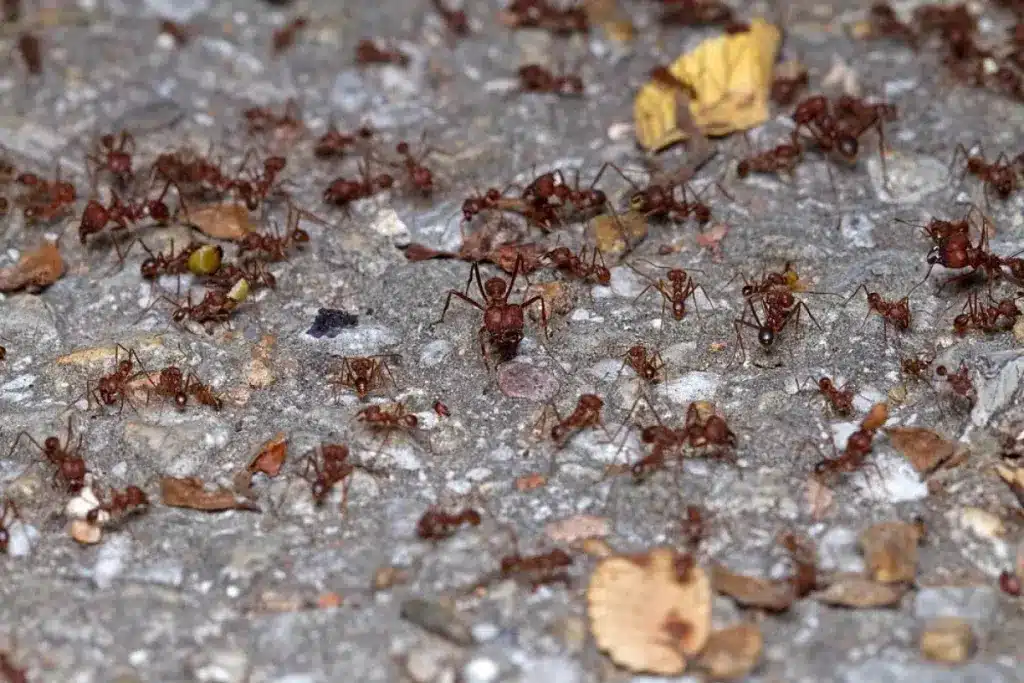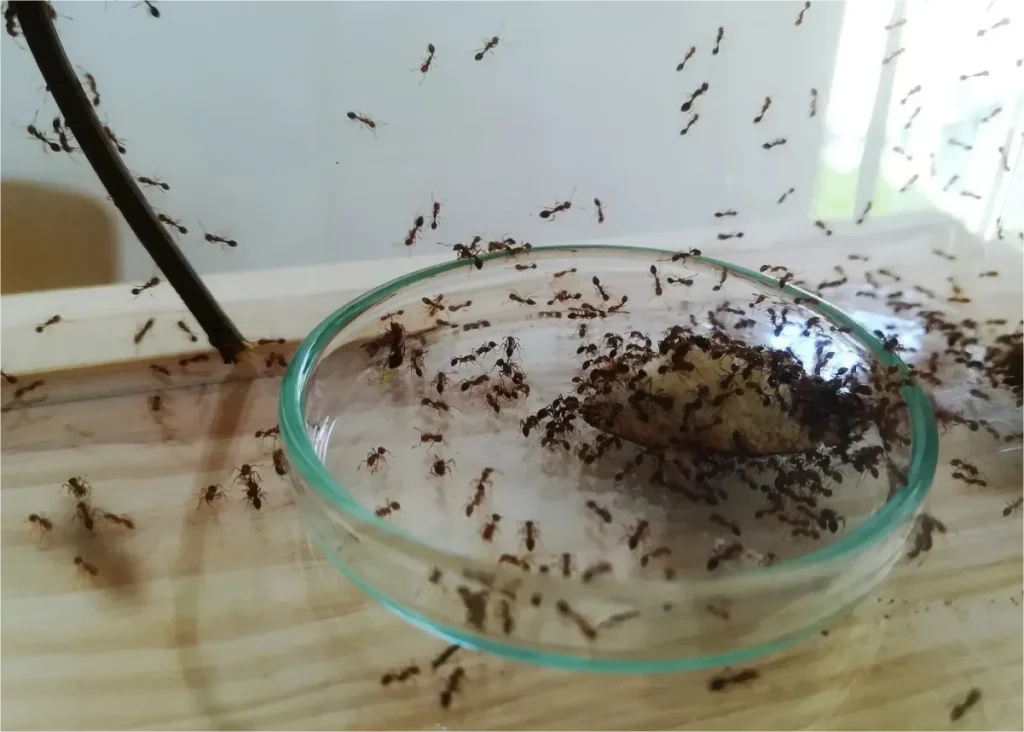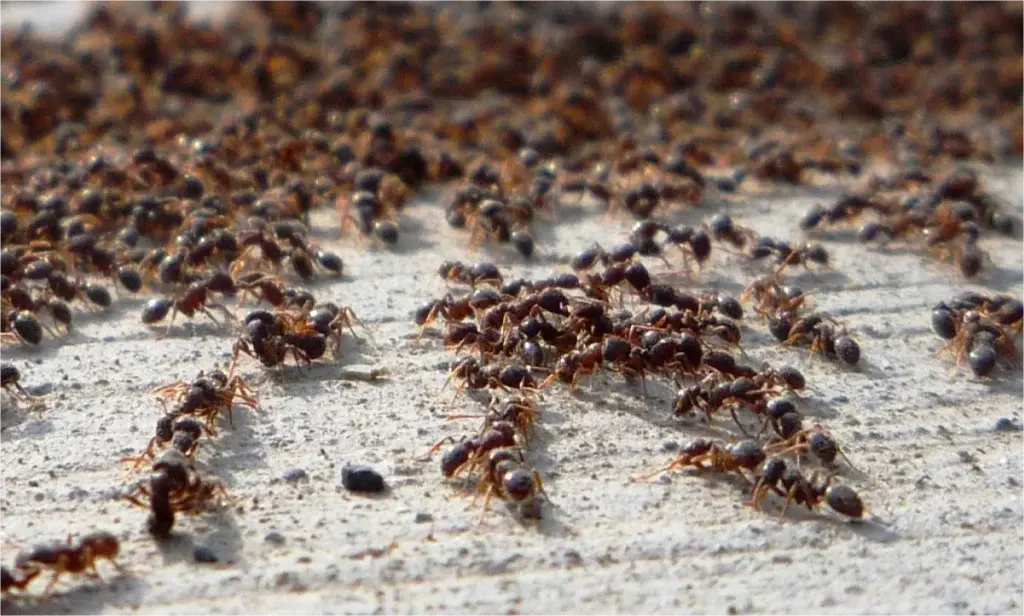Common Ant Species in Texas and How to Control Them
Texas homeowners face some tough challenges with common ant species that get into properties all across the state. These ants can get pricey to deal with when they are damaging your home.

Most Common Ant Species near Victoria TX
Victoria homeowners have problems with several stubborn ants. Each species brings its own set of challenges based on how they behave and build their nests. Getting rid of these tiny pests needs proper identification because each type reacts differently to control methods.

Fire ants
Red fire ants are one of Victoria’s worst ant species. You can spot them by their reddish-brown color and mean streak. These medium-sized ants make unique mounds without central holes that can stretch up to 18 inches across. These ants are quick to attack when someone disturbs their mounds. They climb up vertical surfaces and deliver nasty stings that burn and leave white pustules on your skin. They don’t spray acid like other insects after biting. Instead, they grab the skin with their jaws and twist their bodies to sting multiple times. Beyond their painful stings, these ants can damage electrical equipment. About 1% of people are very sensitive to their venom and can have serious reactions.
Carpenter ants
Texas’s most destructive ants are carpenter ants. Their bodies are reddish-brown or black. These ants don’t eat wood like termites do. They dig tunnels through it to make nesting spaces and leave behind sawdust-like wood shavings called “frass”.
Moist, rotting wood attracts these destructive insects, so you’ll often find them where there are leaks or water damage. Texas has 14 different carpenter ant species. The black carpenter ant is the biggest. Mature colonies pack quite a punch with 20,000 to 50,000 worker ants. They can’t sting but will bite to defend themselves.
Crazy ants
Scientists first found crazy ants near Houston in 2002. Since then, they’ve spread throughout Victoria County and created big problems for locals. These ants are medium-small with lots of hair covering their bodies. They got their “crazy” name because they run around in random patterns instead of lines. Crazy ants are different from other species because they don’t build central nests or mounds. They prefer to set up colonies under rocks, timbers, and piles of debris. Their super colonies can grow to millions of ants that look exactly alike. These ants love electrical equipment and can cause shorts and breakdowns. They don’t sting but can bite, though the pain goes away fast.
Odorous house ants
Odorous house ants love to invade Victoria homes. These dark brown to black ants are about 1/8 inch long. Crush them and you’ll smell something like rotten coconuts. That’s why people call them “stink ants” or “coconut ants”. Your kitchen and pantry are their favorite spots because they love sweet foods. Scout ants leave scent trails when they find food, and soon you’ll see ant highways across your countertops. Their colonies can have anywhere from hundreds to tens of thousands of members. Multiple queens help the population grow faster. These ants are tough to get rid of. You can keep these kitchen pests away by keeping things clean, storing food in sealed containers, and fixing moisture problems.
DO YOU HAVE ANTS AND WANT TO GET RID OF THEM?
How Ants Impact Texas Homes
Ants cause serious damage to properties, create health risks, and contaminate food in Texas homes. Homeowners need to know how these tiny pests can affect their lives to take pest control seriously.

Property damage concerns
Carpenter ants are some of the most destructive pests around. These ants don’t eat wood but dig through it to build their nests. This behavior can make homes weaker. The damage they cause to exterior walls and electrical equipment can be massive if no one stops them. Crazy ants bring their own set of problems to properties. These relentless insects swarm into breaker boxes, AC units, and sewage pumps. They cause shorts and damage electrical systems. Their strange attraction to electromagnetic frequencies leads to power outages as they nest in electrical contacts.
Health risks and allergic reactions
Fire ants can put Texas residents’ health at risk. These aggressive insects sting about 14 million people each year. Their venom burns and leaves distinctive white spots on the skin. About 1% of people who get stung have severe allergic reactions. 33,000 people (0.94% of the population) need medical help for fire ant stings yearly. There are some serious reactions to watch out for.
These reactions have killed over 80 people. People who show these symptoms need medical attention right away.
Food contamination issues
Most ants carry bacteria that ruins food and contaminates surfaces. Odorous house ants usually get into kitchen items. People can get sick from eating contaminated food. On top of that, pharaoh ants have been found contaminating sterile supplies in healthcare settings which raises serious sanitation concerns. That’s why Bugmobiles suggests professional treatment to wipe out entire colonies. Just killing visible ants makes colonies split into multiple new infestations which makes them harder to control.
How to Control the Most Common Ants near Victoria, Texas
Ant control starts with knowing what kind of ant you’re dealing with and then using the right strategy for that species. Each type of ant in Victoria, Texas, behaves differently and nests in different areas. Using the wrong method can actually make the problem worse by causing colonies to split or relocate.

Fire ant control
Fire ants need aggressive and targeted treatment. The best way to handle them is with bait products that worker ants carry back to the colony. Put out bait treatments in the spring and fall when colonies are foraging the most. If you see visible mounds, use a mound drench or find insecticide to kill off the nest. Avoid disturbing the mound without treatment. These ants can attack fast. Looking at your yard every now and then helps catch fire ants early before colonies grow too large.
Carpenter ant control
Carpenter ants require both moisture control and direct nest treatment. First, find the nest by following foraging trails at night when they’re most active. Look for frass (wood shavings) around baseboards, window frames, or attics. Use a non-repellent insecticide directly into their nest voids. Fix any leaks, replace rotted wood, and cut back tree limbs that touch your home. Since these ants don’t eat bait as readily as other species, targeted treatment works better than general sprays or traps.
Crazy ant control
Crazy ants are tough to handle because they don’t have centralized nests. Use non-repellent sprays around baseboards, electrical outlets, and entry points. Treating large areas outdoors with barrier sprays can help slow them down around patios, foundations, and landscape debris. Baits may work, but crazy ants are picky eaters. Work with a professional like Bugmobiles to keep these ants away from electrical units since DIY treatments often miss hidden colonies inside walls or circuit boxes.
Do You Need Ant Services In South, TX?
Getting rid of ants takes more than quick fixes in South Texas. You need to know how these stubborn pests live and behave. Quick DIY solutions might reduce visible ants temporarily, but professional treatment works best to target colonies and stop future infestations. Homeowners can get an inspection from Bugmobile’s professional technicians by calling us today. The team will create a treatment plan that fits your specific situation. Your property stays protected against these persistent Texas ants all year with professional ant control solutions.
